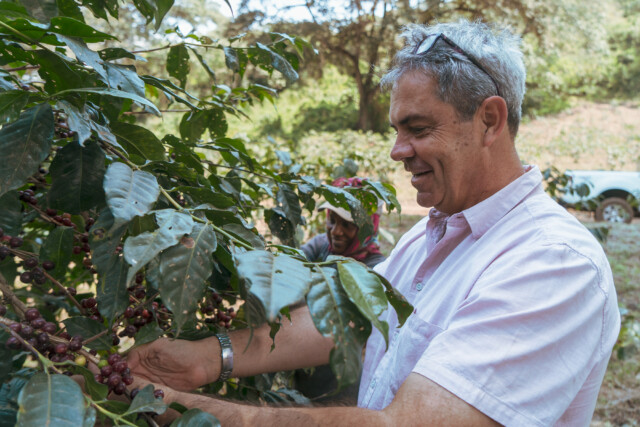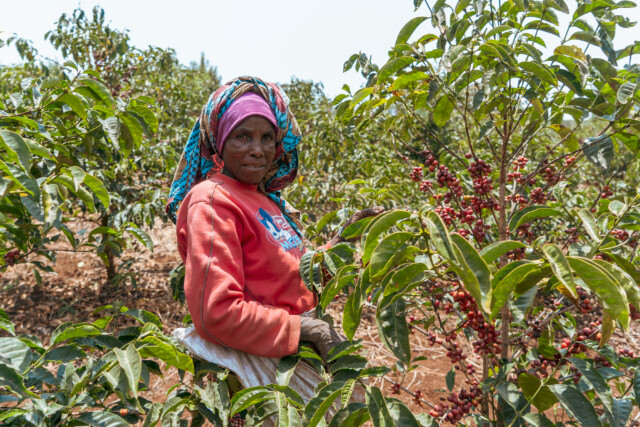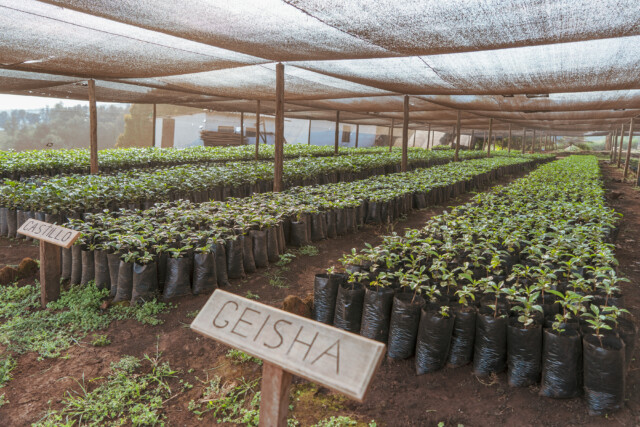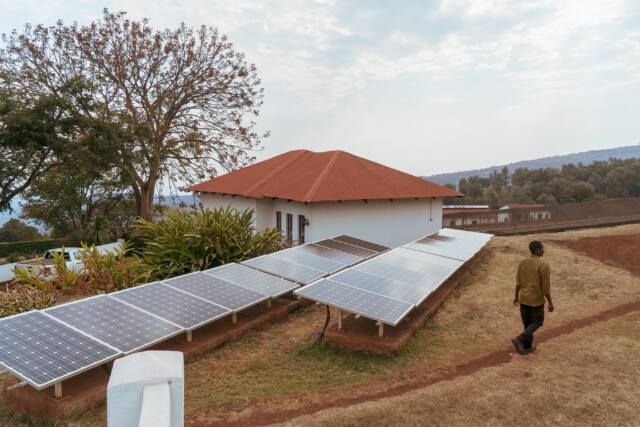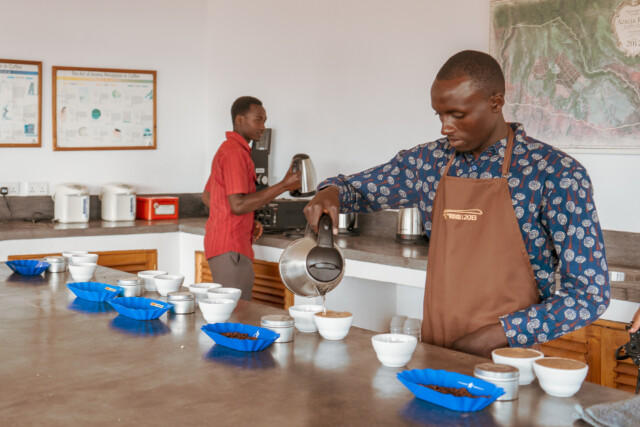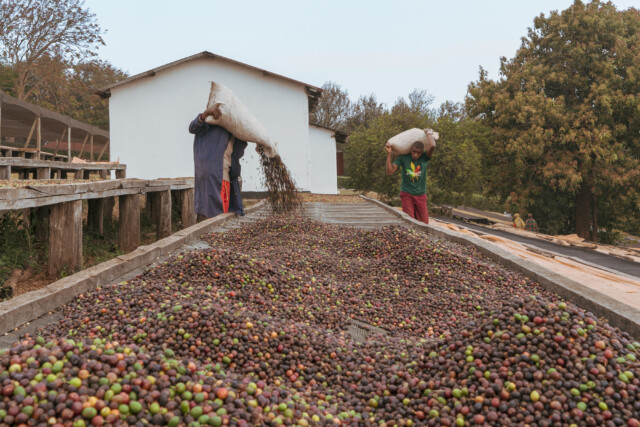Tanzania Acacia Hills
The Farm
Most of the coffee plantations found in northern Tanzania were established in the 1920s after World War I. León’s grandparents were one of these immigrant families from Greece who decided to make coffee farming their profession. León is the third generation of this coffee-growing family and decided in 2000 to look for land to grow coffee at a higher altitude than his family had had, just outside the city of Arusha.
“Today, as in the past, the coffee produced in Tanzania is barely consumed by the national population. All production is exported, almost all of which is commodity coffee. Years ago, when international coffee prices fell, it became difficult to survive solely on coffee production. The shift toward specialty coffee was urgently needed,” says León.
It was during this time that he attended the African Coffee Association trade fair and met Mark Stell, who is currently his partner. Mark is the founder of Portland Coffee Roasters in the United States, and together they decided to purchase a coffee plantation on Mount Oldeani. There are two reasons why León chose the Oldeani land for his new coffee plantation. First, of all the Tanzanian coffees Mark had tasted, the coffee he found most delicious was produced in Oldeani. Second, León had heard from a researcher that the Oldeani soil was ideal for coffee cultivation.
León revived this coffee plantation, which had been in a sorry state. He began planting high-quality coffee trees of different varieties such as Kent, SL 28, Geisha, and Pacamara. Thanks to León’s conscientious efforts and the wonderful natural environment, the coffee quality and production have experienced favorable growth.
Process Method
León decided to build water supply infrastructure in Oldani by installing water equipment on his two coffee plantations and installing a water transportation system to the village water supply tank using gravity-fed pipes. The villages in this area are very poor, and León is trying to create social and economic improvements in the area through these resources.
This coffee is processed naturally. The cherries are hand-picked and taken to the coffee mill. The cherries are then placed on raised pallets to be sun-dried.
When the cherries have transformed into what we know as raisins, they are pulped and stored, leaving the beans with the parchment.
Origin
With its relatively close proximity to Ethiopia and its shared border with Kenya, part of Tanzania’s population has a long history and cultural relationship with coffee, namely the Haya people, for whom the plant was used not so much as a beverage but as a chewable. Coffee (probably Robusta) was grown for this domestic purpose until German settlers essentially mandated that farmers grow Arabica coffee as a cash crop, extending the plants’ reach within the country and developing the industry around Mount Kilimanjaro.
Germany lost control of the colony to the British after World War I, and the British attempted to develop a more efficient and profitable coffee industry similar to Kenya’s. Small farmer cooperatives began to organize in the 1920s to try to improve market access, but it took many years before Tanzanian coffees truly became popular internationally.
In 1964, after both countries achieved independence from Great Britain, Tanganyika and Zanzibar combined to form the Republic of Tanzania, hence the country’s name, Tan/Zania. Producers attempted aggressive growth in the 1970s but struggled to increase production. The 1990s saw efforts to reform and privatize coffee exports, allowing producers to sell more directly. Today, throughout most of the Western world, Tanzanian coffees are known primarily as separate peaberry lots.
With its relatively close proximity to Ethiopia and its shared border with Kenya, part of Tanzania’s population has a long history and cultural relationship with coffee, namely the Haya people, for whom the plant was used not so much as a beverage but as a chewable product. Coffee (probably Robusta) was grown for this domestic purpose until German settlers essentially mandated that farmers grow Arabica coffee as a cash crop, extending the plants’ reach within the country and developing the industry around Mount Kilimanjaro.
Germany lost control of the colony to the British after World War I, and the British attempted to develop a more efficient and profitable coffee industry similar to that of Kenya. Small farmer cooperatives began to organize in the 1920s to try to improve market access, but it took many years before Tanzanian coffees truly became popular internationally.
In 1964, after both countries achieved independence from Britain, Tanganyika and Zanzibar combined to establish the Republic of Tanzania, hence the country’s name, Tan/Zania. Producers attempted aggressive growth in the 1970s but struggled to increase production. The 1990s saw efforts to reform and privatize coffee exports, allowing producers to sell more directly. Today, in most of the Western world, Tanzanian coffees are known primarily as separate peaberry lots.
13,25 € – 53 €
Free shipping from €40 purchase
